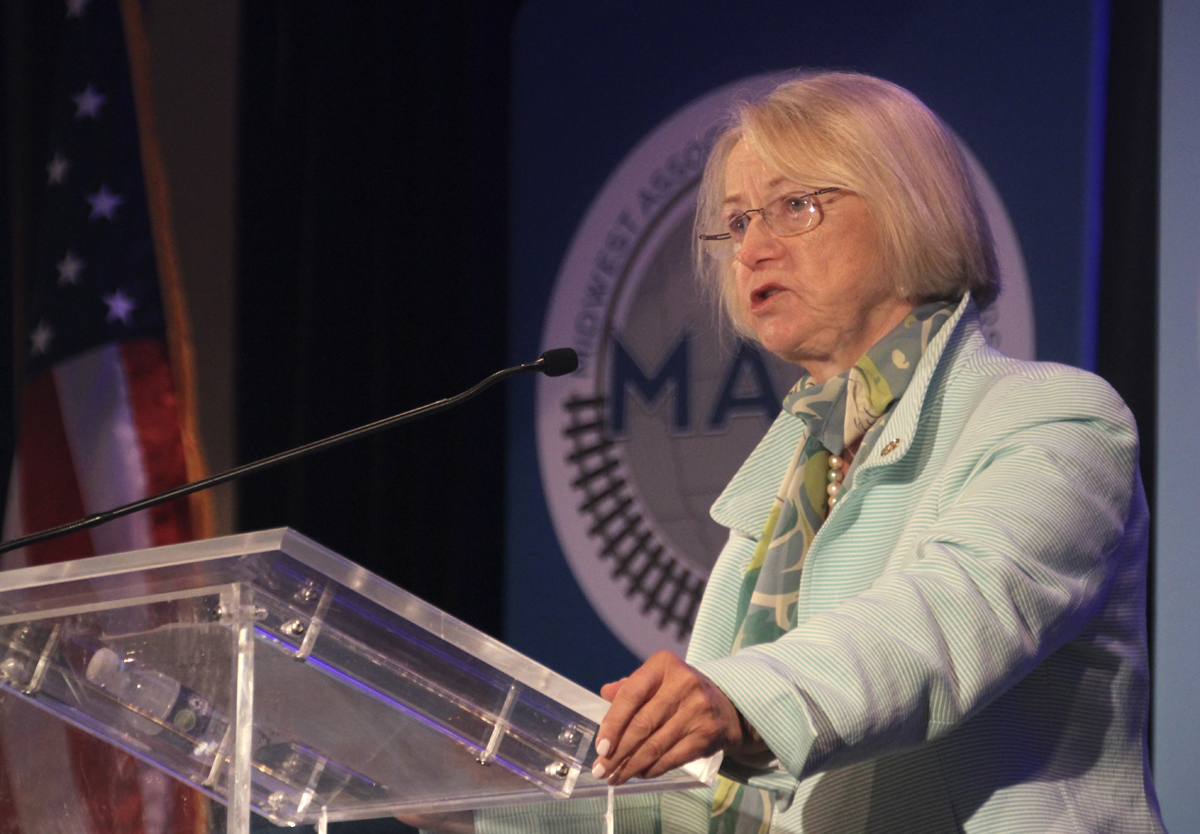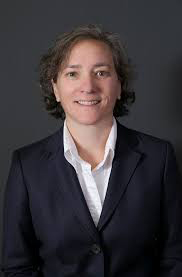
Railroads will not replace each coal hopper with a flat car of windmill blades, but America’s commitment to increasing its use of renewable energy is altering the relationship between railroads and energy. Whether through the transportation of raw materials, intermodal, or network capacity, renewables will affect railroads’ business because of how it is interwoven in the global supply chain.
Today the U.S. is reliant on fossil fuels for electricity, leaning on natural gas, coal, and other non-renewables for 80% of its energy needs. Renweable energy accounts for 20%, with wind at 9%, hydropower 6%, solar 2%, and biomass at less than 2%, according to recent U.S. government data. The government and companies that do business in America, including railroads, are committed to cleaner, more efficient renewable energy. Railroads will inevitably be integrated into the renewable energy supply chain as it gains more market share.
In 2012, renewables produced 495 billion kilowatt hours of electricity; in the ensuring 10 years, that has increased 60% to 792 billion kilowatt hours. According to the National Renewable Energy Laboratory, wind generating capacity has more than doubled in the past decade, with Texas, Iowa, and Oklahoma leading the nation in wind farms. Today there are more than 70,800 wind turbines.
Windmills are made up of thousands of parts, consisting of steel, fiberglass, resins, or plastics, as well as iron, copper, and aluminum. Each of these raw materials are regularly hauled by freight railroads. Windmill manufacturers have factories across North America to build nacelle and wind turbine blades. General Electric, Siemens, and Vestas are major manufacturers, accounting for roughly 75% of manufactured wind capacity.
Solar panels also use raw materials hauled by railroads, being made from crystalline silicon, copper, and metals. A standard residential 60-cell solar panel, measuring 5.4 feet by 3.25 feet, can include up to 660 grams of silicon. A single railcar carrying 100 tons of silicon would provide enough material for more than 137,000 of these solar panels.
Finished panels can be shipped in boxcars or intermodal containers. This creates opportunity for intermodal rail, particularly for imports, because the U.S. relies heavily on Asia to fill a domestic supply gap, even with Trump-era tariffs imposed on imported solar energy. About 80% of U.S. solar panel installations use panels originating in Malaysia, Vietnam, or South Korea.
Based on this information, one could conclude railroads’ relationship with energy suppliers favors fossil fuels; however, it’s not fair to say railroads are entirely excluded from the renewable energy movement.
Railroads can financially benefit from renewable energy technology d for applications ideal for solar panels or alternative energy. This is already occurring with wayside infrastructure or battery-powered locomotives. Railroads are also leveraging technology to maximize fuel conservation and being smarter about the energy they consume. These efforts improve operating costs when carload revenues are soft, especially in coal-rich areas of the Class I network.
As big railroads move fewer coal carloads, their networks have surplus capacity to handle new business growth. This allows a sharpened focus on converting truck traffic to rail, the “pivot to growth” in which railroads target carload growth as part of implementing Precision Scheduled Railroading. Attracting more carloads theoretically means fewer carbon emissions from highway trucks, giving railroads an environmental edge over its trucking competitors.
Railroads have been provided the opportunity to change how they conduct business, touting their environmental benefits to an audience increasingly sympathetic to sustainability. This would demonstrate not only the industry’s ability to change but resiliency during a time of transitioning priorities.
Railroads won’t replace every lost carload of coal, but their success in adapting to will ensure relevancy in a renewable world, hauling raw materials, capitalizing on intermodal, and being smart about operating costs. Renewable energy is a chance for railroads to re-think how they run trains














There are often fiber optic corridors in railroad ROW’s. During FO buildout in the 1980’s and 1990’s the railroad’s were looking for income and it was easy money to lease a corridor to a FO company. Today, the FO income isn’t as critical, but the presence of FO is often a frustration for MOW folks like myself.
As a bridge guy, the thought of high voltage power lines strung along rail corridors makes me grimace. Rebuilding a railroad bridge is challenging enough, it is even tougher while trying to stay 40′ away from a high voltage line that is offset 45′ from the centerline of track. Speaking from experience.
On the flip side, I am sure the power line folks don’t like to deal with all the railroad safety and insurance requirements either.
Apologies for the double post, the comment section was acting up for me this morning.
As for “sustainable energy” business for the railroads, I thought the article was looking for way rail can provide haulage in support of it.
Examples I thought of:
– EV Battery distribution (like auto parts)
– Raw material distribution (lithium, nickel, potassium)
– Shipping LNG for bulk hydrogen production
– Bulk silicon for solar panel production
They already bring in turbine replacements for hydro locations.
I am sure there are other examples.
Safe Harbor, upstream from Conowingo, was built concurrently with PRR’s electrification to Harrisburg. Two of the turbines there still generate 25 Hz power rather than 60 Hz.
Note this hardware is almost 90 years old but it seems the old hardware recovers from outages better than the modern stuff.
On Amtrak, 60 Hz power actually begins at the West (Long Island) end of the Hell Gate Bridge. You have 12 kV 60 Hz power over the bridge and up to “SHELL” and then on Metro North’s ex-NH track to New Haven. East of New Haven to Boston, power is 50 kV 60 Hz.
Commercial power lines share the catenary poles with Amtrak’s power. You can tell which is which: Amtrak is single-phase AC and uses two wires while commercial is three-phase AC and uses three wires.
SEPTA’s cat poles also carry commercial power.
I should correct myself. The 50 kV is split at the substations which send 25 kV power East and 25 kV West in the catenary.
This is not as robust as PRR’s 1915-1938 system but it’s what you get when the consultants have mainly European experience.
Safe Harbor was built to power PRR’s 25 Hz electrification and still does partially, in addition to 60Hz for the commercial side. Conowingo was not and does not. There are five additional power sources along the “old” NEC either generating at 25Hz or converting from 60. Above New Haven it’s all 60Hz.
Something I’ve wondered about: the potential of railroad rights of way to be used for electric transmission lines for strengthening a sustainable grid, perhaps making electrification easier. What are the challenges to such a potential synergy that does not really seem to have happened?
Christopher,
I am reminded of long defunct local shortline, the Washington & Old Dominion. In the early 60s, the W&OD leased the air rights above it’s right-of-way to the Virginia Electric Power Company for power lines. For a brief while the rail and power lines coexisted. The W&OD was eventually abandoned but the power lines are still kicking.
There’s already some precedent for this on Class I railroads. SP put telephone wires along it’s right of way in the 70s and 80s. Remember SPRINT? That’s what it was.
Nothing at all unusual. Trolley lines were in many cases owned by electric utilities. Today the bike paths run alongside electric transmission lines.
Telephone and electric lines along steam/ diesel railroads weren’t at all uncommon, or pipelines.
Here’s one for you, a pipeline for (rhymes with bit or kinit or wit or grit). Alongside CNW in Milwaukee. Formally known as ISP, for Interplant Solids Pipeline, it carried the byproduct from the sewer plant to the plant making Milorganite fertilizer.
And at one point in their history didn’t Southern Pacific own pipelines.
There are often fiber optic corridors in railroad ROW’s. During FO buildout in the 1980’s and 1990’s the railroad’s were looking for income and it was easy money to lease a corridor to a FO company. Today, the FO income isn’t as critical, but the presence of FO is often a frustration for MOW folks like myself.
As a bridge guy, the thought of high voltage power lines strung along rail corridors makes me grimace. Rebuilding a railroad bridge is challenging enough, it is even tougher while trying to stay 40′ away from a high voltage line that is offset 45′ from the centerline of track. Speaking from experience.
On the flip side, I am sure the power line folks don’t like to deal with all the railroad safety and insurance requirements either.
Correct me if I am wrong, but Amtrak’s Northeast Corridor from Washington to New York receives its electricity from a hydroelectric plant. Combining that with advanced regenerative braking technology this part of the NEC at least “green”.
Actually I don’t know the source. There’s not a lot of hydro in the Northeast (Niagara Falls probably the bulk of it) though some hydro is imported from Canada (once again Niagara Falls). If Amtrak runs on 60 cycle (regardless of vac) power can come from anywhere.
Alexander, we shouldn’t fall into a trap of one consumer using “green” energy and another slurping off the neighborhood coal plant. We all use energy from the same grid. The number to look at is the entire continent’s balance of hydro, nuke, solar, natural gas and coal, regarless of one customer claiming to purchase from a “green” source..
PS Hopefully most of us aren’t old enough to remember the New Haven’s coal-fired power plant at Cos Cob, Connecticut.
Yes, the Conawingo dam on the Susquhanna in Maryland (along the Port Road line) was built to provide electricity for PRR. Noiw it is all integrated into the grid.
I didn’t know that. The dam’s not quite visible from the NE Corridor, though it can be seen from I-95. I’ve driven over it many times when taking the scenic no-toll route north from Baltimore.
I visited one of the 2 or 3 hydro power plants on the Susquehanna River about 60 years ago. At that time they had 1 0r 2 dedicated 25 Hertz turbines to supply power to the Pennsylvania RR.. All the rest were 60 Hertz to supply the commercial grid.